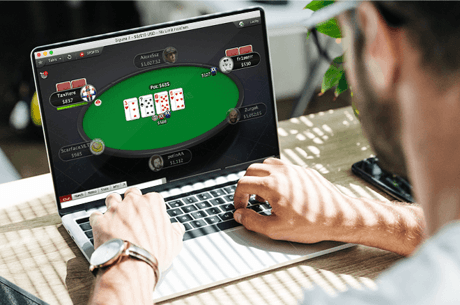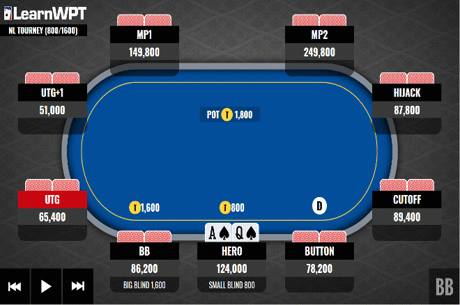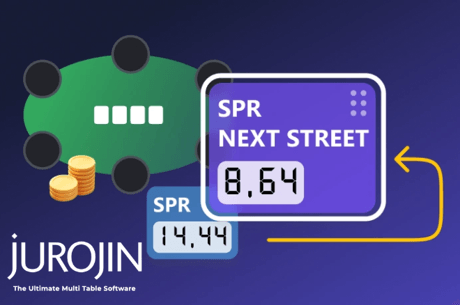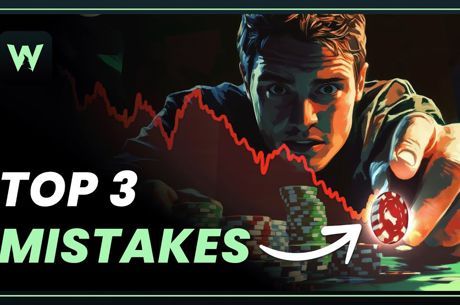Tommy Angelo Presents: Forecasting Tilt
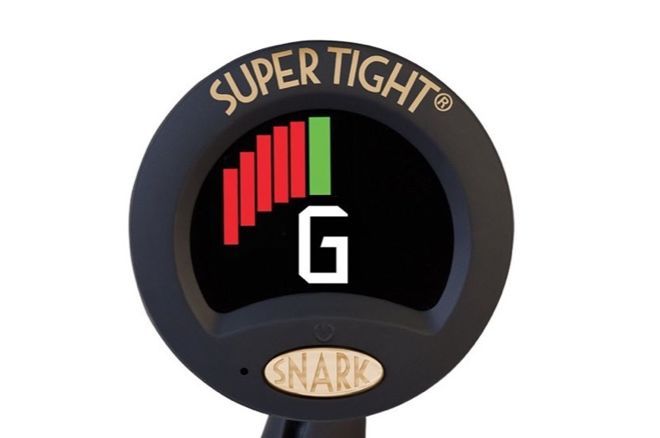
I remember when LED guitar tuners came out. Life became so much better for musicians, especially on stage. The readout was three little lights in a row. The middle light was green and that was the target. Green meant "in tune." The other two LEDs were red. They let you know if you were flat or sharp. To tune a string, you'd pluck it, and adjust to green. Nothing to it.
To be a tilt forecaster, you're going to need a tilt meter. A tilt meter works just like a guitar tuner. You plug an opponent into it, and take a reading. Green light, in tune. Red light, out of tune.
With typical tilt monitoring, we learn about someone's tilt after they play bad. Then we go on high alert, anticipating another wave of tilt from that player. And that's good. But tilt forecasting is way better because it's not about history, it's about now. Past information is often worthless, as when a player tilts big one time, busts out, and quits. Or they rebuy, and tighten way up. You don't always get a second chance to bust a tilter. That's why, in between folds, you practice your prognostications.
Forecasting means keeping track of who might be simmering and who is about to boil over. This awareness gives you a poker superpower — the ability to correctly adapt to your opponent's tilt at the moment it happens, because you felt it coming. To do that, you keep track of green lights and red lights. And to do that, you watch the end of every hand, and then keep an eye on the losers of big pots. It might take an hour of simmering before the lid flies off.
The game is $2/$5 no-limit hold'em. Our hero, the tilt victim, sits calmly behind his well-constructed $2,000 stack. He's been playing his best game. The tilt meter shows him as steady green.
Forecasting means keeping track of who might be simmering and who is about to boil over. This awareness gives you a poker superpower — the ability to correctly adapt to your opponent's tilt at the moment it happens, because you felt it coming.
Hero is dealt A♣K♣ in the big blind. Cutoff opens for $20. Folds to Hero who makes it $80. Cutoff calls. The pot is $167. Cutoff has $400 left.
The flop comes Q♣6♣5♦. Hero c-bets for $100 with the nut flush draw and two overcards. Cutoff calls.
The turn is an offsuit four. The board is Q♣6♣5♦4♠.
Hero bets $300, putting the cutoff all in if he calls.
The cutoff says, "You probably got me, but I could hit a straight. I call."
The river is the J♥. Hero missed everything. He has ace-high.
With a snap of the wrist and a mumbled complaint, Hero reveals his cards, and his tilt. We now know he's experiencing some combination of frustration, injustice, anger, shame, and loss. He's hurting. He's red-lighting. He might be about to play his C-game. And that's a good thing to know about the people you're playing poker with.
The cutoff sheepishly reveals an unimproved pocket pair of deuces, as if to say, "Oh? Did I play a pot? Are all those chips in the middle really mine?"
We all know how painful it can be to wait for ace-king, flop huge, get all in, and then lose to a clueless opponent. We know Hero has been knocked out of tune, but will his red light return to green before you play a pot against him? That's what your tilt meter is for. To keep track of this stuff.
And then there's you.
Once an hour, or after any big pot, use the tilt meter on yourself, to see if you're sharp or flat. Maybe you just won a big pot and you're about to let fly with a flurry of abundance tilt. If so, the red light on the right will let you know.
Or maybe you've been punished and ridiculed by the poker gods. Two cracked sets they dealt you, and a felted monster draw. Your pitch is woefully flat, as indicated by the red light on the left, pulsing in anger.
When an opponent red-lights, you profit by being alerted to their tilt potential. When you red-light, the alert allows you to forecast your own tilt, and profit by squelching it before it happens.
How to perform the squelching is another article. And sometimes it won't be possible. But by using the meter, at least you'll know when you're in danger, a necessary step before you can consciously move to the security and satisfaction of green lights and proper tuning.

World-class coach and author Tommy Angelo is now offering poker pain relief to everyone. You can schedule a call to talk to Tommy about bad betting, bad quitting, bad tempers, or whatever else is hurting your game. Just go to tommyangelo.com. Angelo's first book, Elements of Poker, was called "the seminal poker text of the 21st century" by The London Times, and it has revolutionized the way serious players approach the game.

